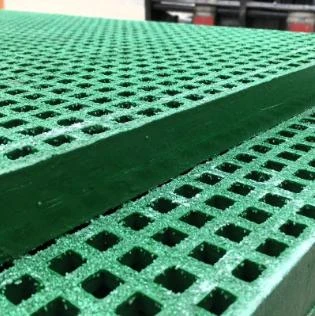loading...
- No. 9, Xingyuan South Street, Dongwaihuan Road, Zaoqiang County, Hengshui, Hebei, China
- admin@zjcomposites.com
- +86 15097380338
- Welcome to visit our website!
Effective Methods for Treating Well Water Quality Issues and Ensuring Safe Consumption
Well Water Treatment Ensuring Safe Drinking Water
Access to clean drinking water is essential for health and well-being. For many rural communities and households, well water serves as the primary source of drinking water. However, well water can often be contaminated with various pollutants, including bacteria, heavy metals, and chemicals, making water treatment crucial for safety. This article will discuss the importance of well water treatment, common contaminants, methods of treatment, and tips for maintaining well water quality.
Importance of Well Water Treatment
The quality of well water can greatly affect human health. Unlike municipal water supplies, which are treated and monitored for contaminants, well water may be vulnerable to issues arising from natural sources or human activities. Untreated well water can lead to waterborne diseases, gastrointestinal issues, and long-term health problems. Hence, testing and treating well water is vital for ensuring it is safe for consumption.
Common Contaminants in Well Water
Numerous contaminants can threaten the quality of well water. One of the most common issues is bacterial contamination, particularly from pathogens such as E. coli and coliform bacteria, which can indicate fecal contamination. Additionally, heavy metals like lead, arsenic, and mercury can seep into groundwater from geological formations or human activities such as mining and agricultural runoff. Chemicals like nitrates, commonly found in fertilizers, can also infiltrate well water, posing significant health risks.
Methods of Well Water Treatment
There are several treatment methods available to ensure well water is safe for drinking. The choice of method often depends on the specific contaminants detected during water testing.
1. Filtration Water filters can remove sediment, chlorine, heavy metals, and other impurities. There are various types of filters, including sediment filters, activated carbon filters, and reverse osmosis systems. Each is effective against different contaminants.
2. Disinfection To eliminate bacteria and viruses, disinfection methods such as chlorination, UV radiation, or ozonation can be employed. Chlorination is a common method that adds chlorine to kill pathogens, while UV treatment exposes water to ultraviolet light to deactivate microorganisms.
3. Water Softeners In areas with hard water, which contains high levels of calcium and magnesium, water softeners can be used to reduce scale buildup and improve water quality. They work by exchanging hard ions with sodium.
well water treatment

4. Distillation This method involves boiling water and collecting the steam, which leaves contaminants behind. Distillation is effective for removing heavy metals and certain chemicals, but it requires a significant amount of energy.
5. Aeration To address issues with volatile organic compounds (VOCs) or excess iron and manganese, aeration can be used. This process introduces air into the water, promoting the release of gases and helping to remove dissolved minerals.
Maintaining Well Water Quality
To ensure long-term safety and quality of well water, regular maintenance is crucial. Homeowners should
- Conduct Regular Testing It’s important to test well water at least once a year for bacteria, nitrates, pH levels, and other contaminants. This helps to identify any potential issues early on.
- Inspect the Well System Regularly check for signs of wear, damage, or leaks in the well casing and pump. Proper maintenance can prevent contamination from surface water.
- Protect the Surrounding Area Keep hazardous materials such as fertilizers, pesticides, and septic tanks a safe distance from the well. Implementing proper land-use practices can help safeguard water quality.
- Educate Yourself Stay informed about local water quality issues and participate in community efforts to maintain and protect water resources.
Conclusion
Well water treatment is essential for ensuring safe drinking water for households relying on private wells. By understanding common contaminants, implementing effective treatment methods, and maintaining water quality, individuals can protect their health and enjoy clean, safe water from their wells for years to come.
-
GRP Structures: The Future of Lightweight, High-Performance EngineeringNewsJun.20,2025
-
FRP Water Tank: High-Performance Storage for Corrosive and Clean Water SystemsNewsJun.20,2025
-
FRP Square Tube: The New Industry Standard for Chemical and Structural ApplicationsNewsJun.20,2025
-
FRP Pultruded Profiles: The Ultimate Choice for Lightweight Structural StrengthNewsJun.20,2025
-
FRP Handrails: The Safer, Smarter, and Stronger Choice for Modern InfrastructureNewsJun.20,2025
-
FRP Grating: The Smart Solution for Durable, Lightweight Industrial FlooringNewsJun.20,2025
-
Why Choose a Galvanized Water Tank for Your Storage NeedsNewsMay.21,2025
